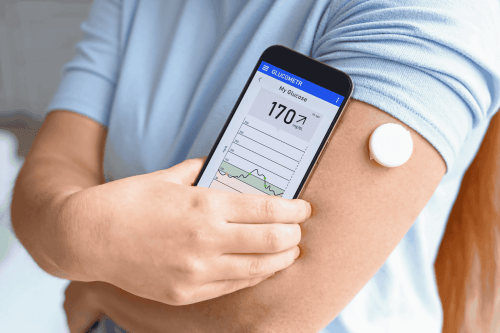Providing healthcare is undeniably one of the most promising and rewarding ventures in today’s business landscape. This is because of the rapidly growing global population and aging demographic. As featured in Companies Market Cap, the top 10 publicly traded healthcare companies have revenue of $39 billion to $359 billion as of 2023. This shows that there’s a continual focus on health and wellness. The demand for healthcare services is not only constant but escalating. Digitizing healthcare makes an exciting playground for entrepreneurs and businesses too. However, data breaches, privacy violations, and subpar care can harm the very individuals healthcare is meant to serve. Beyond these immediate consequences, it can result in exclusion from vital government programs. You don’t want to lose your accreditations and long-term viability. Thus, you should uphold the sacred trust between you and your patients with successful quality care, and of course, compliance.
Digitizing Healthcare: Do’s and Don’ts

Electronic health records, telemedicine, and health apps have transformed the way patients and professionals interact with healthcare data. While these advancements bring undeniable benefits, they also introduce complex challenges related to healthcare compliance. Navigating this intricate terrain successfully requires a firm grasp of digital do’s and don’ts. In this blog, we’ll explore the essential guidelines to ensure your healthcare practices remain compliant in the digital age.
Do: Embrace secure communication
Opt for secure communication channels when sharing sensitive patient information. Encrypted email, secure messaging platforms, and virtual private networks (VPNs) can help protect data during transit.
Don’t: Access or transmit patient data on public Wi-Fi networks
Public Wi-Fi networks, commonly found in coffee shops, airports, and hotels, lack the necessary security measures to protect sensitive patient data. Never utilize these networks for any healthcare-related activities. Accessing electronic health records or transmitting patient information exposes such data to a plethora of cybersecurity risks. These include potential data interception, unauthorized access, and man-in-the-middle attacks. Unfortunately, all of these could lead to severe legal consequences, including HIPAA violations.
Do: Educate yourself on HIPAA compliance
Study the Health Insurance Portability and Accountability Act (HIPAA) guidelines. Ensure that your digital practices, including telehealth services, adhere to these regulations to safeguard patient privacy.
Don’t: Use cloud technology that is not specifically designed for healthcare
Generic cloud services may lack the necessary safeguards and compliance features to protect patient privacy adequately. With healthcare-specific cloud solutions, there are robust security measures, encryption, audit trails, and data access controls that are necessary to meet industry standards.
Do: Regular staff training

Digital compliance requirements and best practices can evolve, so it’s crucial not to assume that one-time training is sufficient. Conduct regular training sessions for your staff to educate them about digital compliance requirements and best practices. Knowledgeable employees are your first line of defense against potential breaches.
Don’t: Overlook the importance of a robust disaster recovery plan
Regularly back up patient data and have contingency plans in place to ensure data integrity and availability in case of unforeseen events.
Do: Create strong password policies
Implement strong password policies across all digital platforms. Use complex passwords and two-factor authentication to add an extra layer of security.
Don’t: Share credentials
Never share login credentials, even among trusted colleagues. Each user should have their own unique access, and all access should be regularly reviewed and revoked when necessary.
Do: Data encryption

Encrypt patient data both in storage and during transmission. This keeps the data unreadable and unusable to unauthorized parties.
Don’t: Use personal devices
Avoid using personal devices for work-related healthcare tasks, as they may lack necessary security measures. Keep personal and professional devices separate.
Do: Vendor assessment
When partnering with digital healthcare vendors, perform thorough assessments of their security protocols and compliance measures. Choose vendors with a strong commitment to data protection. With MedCore Solutions, you’ll work only with vetted healthcare experts and professionals tailored to your organization’s needs.
Don’t: Bypass consent
Never access or share patient information without proper consent. Ensure that you have explicit permission from patients before disclosing any sensitive data. Also, never store patient data on portable devices like USB drives or laptops without adequate encryption and security measures. These devices are easily lost or stolen.
Do: Audit trail maintenance
Maintain detailed audit trails for all digital interactions with patient data. This can help in identifying and addressing any suspicious activity promptly.
Don’t: Ignore Updates
Don’t neglect software and system updates. Regularly update all devices and applications to patch vulnerabilities and enhance security.
Conclusion

Success hinges on your ability to navigate the intricacies of compliance. By following these digital do’s and don’ts, you can harness the power of digitizing healthcare to provide efficient and secure healthcare services while safeguarding patient privacy and data. Remember, in the world of digitizing healthcare, compliance is not an option—it’s a critical imperative.
Take the first step towards ensuring the security and compliance of your healthcare practices. Partner with AMC today for a tailored, free course development for large teams. Get started with your customized compliance training here.



